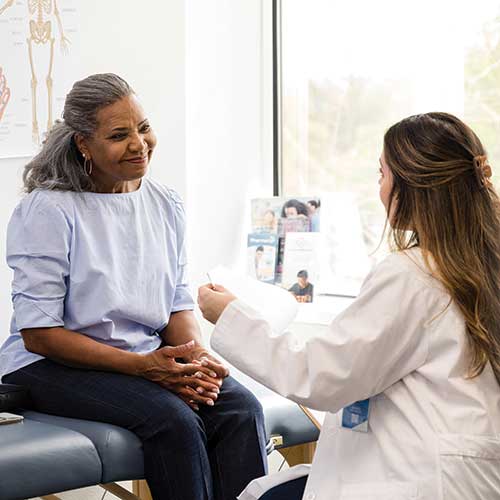August 2019
Between work, home, family and everything else on the to-do list, the modern American woman has a lot on her plate at any given time — and that means she often puts self-care on the back burner. But living your healthiest life isn’t as hard as it may seem. Like anything else, it comes down to prioritizing. Here are some of the most important things you can do to help maintain health and wellness through every stage of life:
Young Adulthood (20s and 30s)
You know the drill: good health starts with eating right, exercising regularly and getting enough sleep. But it’s also important to regularly check in with your physician. The Health Resources & Services Administration recommends
an annual “Well Woman” exam for those in this phase of life to monitor important health variables like weight, blood pressure and cholesterol. This exam also screens for breast and cervical cancer. Beginning at the age of 21, the U.S. Preventive Services Task Force (USPSTF) recommends that women get a PAP smear, a test that screens for cervical cancer, at least every three years.
This is also a time when you can take important steps for your future health. Are you planning to have children? Remember: fertility peaks in your late 20s, and pregnancies in women over the age of 35 are considered “high risk.” If you are looking to get pregnant in the future, discuss it with your doctor. He or she can help you plan appropriately. If you are already pregnant, your obstetrician will offer advice to help you and your baby thrive. And if children aren’t on your radar right now, your doctor can guide you to the best birth control options for you.
Midlife (40s and 50s)
This phase of life can be one of “in-betweens.” While some women may still be expanding their families in the earlier part of midlife, this is also the time of life when women experience the “great change of life,” otherwise known as menopause. During midlife, many women start experiencing symptoms of menopause, such as irregular periods, hot flashes and night sweats. Feelings of depression and anxiety are also quite common. Make sure to talk to your doctor if you are dealing with any of these issues — he or she can help you find the relief you seek.
No matter where you are in midlife, annual “Well Woman” checks are still highly recommended, but with a few new screenings on the roster. The American Cancer Society recommends women 45-55 years of age get an annual mammogram to screen for breast cancer. (After 55, you can cut back to once every two years.) And starting at age 50, the USPSTF recommends a colonoscopy to screen for colon cancer. (Luckily, for most women, this procedure is required only every five to 10 years.)
Starting at 45 years of age, your doctor will likely order annual cholesterol checks — and also regular diabetes screening.
Later Life (60s, 70s and Beyond)
According to the Social Security Administration, the average life expectancy of a woman who makes it to age 60 is almost 84.5 years old. With so much life left to live, this is no time to skimp on your health screenings, so continue with regular mammograms, colonoscopies and blood tests. You should also expect your physician to start screening for early signs of dementia or other neurological disease.
In addition, your doctor will likely want to take a closer look at your heart health. Although cardiovascular disease was long considered a male issue, heart disease is the number one cause of death for women. And heart-related symptoms in women can differ significantly from those in men.
Finally, starting at 65 years of age, the USPSTF recommends that all women receive a bone density scan every two years to look for signs of osteoporosis. Women are at a greater risk for the disease due to the hormonal changes that occur in women later in life. But doctors may require the test earlier or more often for those with a family history of bone issues.
With regular wellness visits and age-appropriate screenings, women can optimize their health at every stage of life.



